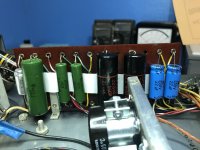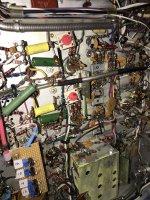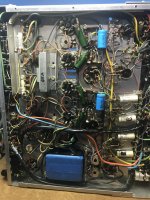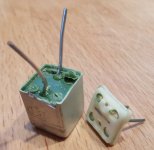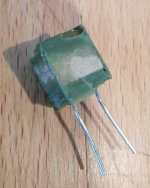I have heard, they should be good caps, but large. Unfortunately not tried them myself. Have had the smaller 0,5µF that sounded much like the K40y's.
Wonder if others have a opinion? There seems to be awfully quiet in here lately...
Wonder if others have a opinion? There seems to be awfully quiet in here lately...
Just found this tread, in another forum...Hello,
What are the opinions about the MBGCh-1 (МБГЧ-1 1uF/500V)? Huge sealed cans.
1. It's only a design number starting from 1. Nothing else.1. Are the last 2 digits of the K73-XX used to indicate the form factor such as radial or axial only?
2. There are various K40 and K42 types of PIO, e.g. K40Y9, K42Y2. Is there any rule of thumb to indicate one is superior to the other?
2. There is not. Some of them are better some are not. You just have to know (to read) about their design or to listen to other 'audiophiles' opinions.
Can anyone please explain to me how to connect a K73P-3? Why do they have 4 legs?
Many thanks 🙂
Many thanks 🙂
It looks to me two legs are the capacitance, the other two are connections to the capacitor's metal case for shielding. Those should be grounded to have an effect. Test with a DMM which ones are which. Capacitance mode and continuity mode should answer.
The long legs are the cap and the pair of shorter legs have zero resistance between them. The odd thing is that the short legs are not connected to the outer casing.
If the extra legs are only there for extra mechanical stability, its weird for such low mass caps. Unless they were made to withstand high G force in jets & missiles. Or they stem from some kind of an internal shield.
If you have many and you got them cheap, smash one to see if there's an internal screen connected to those extra legs or they are there just for stability.
Short legs are indeed just for mechanical stability
Attachments
Last edited:
- Home
- Design & Build
- Parts
- Russian PIO caps. Should I use them?
